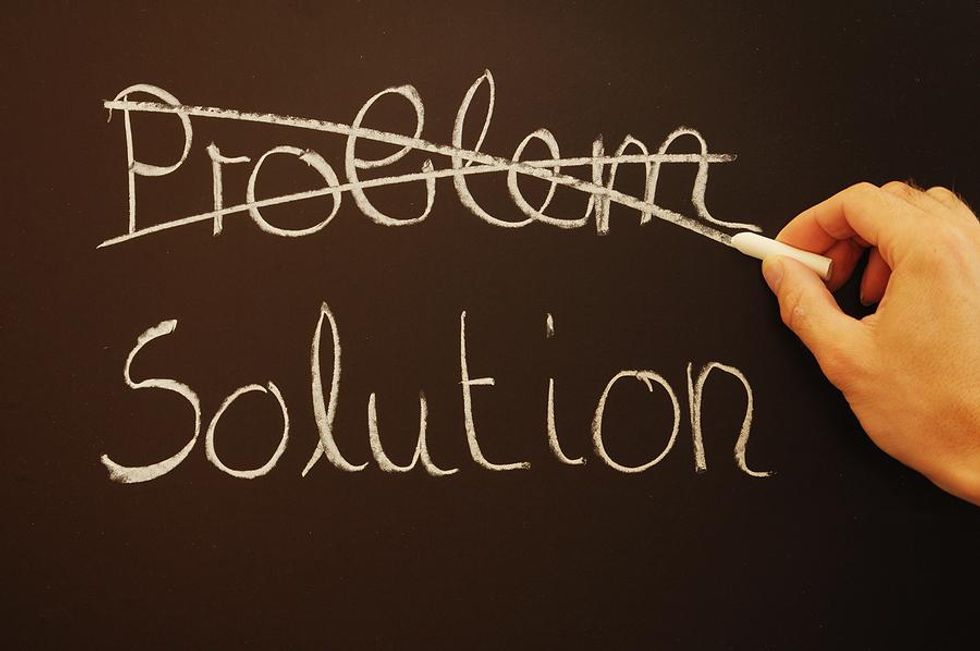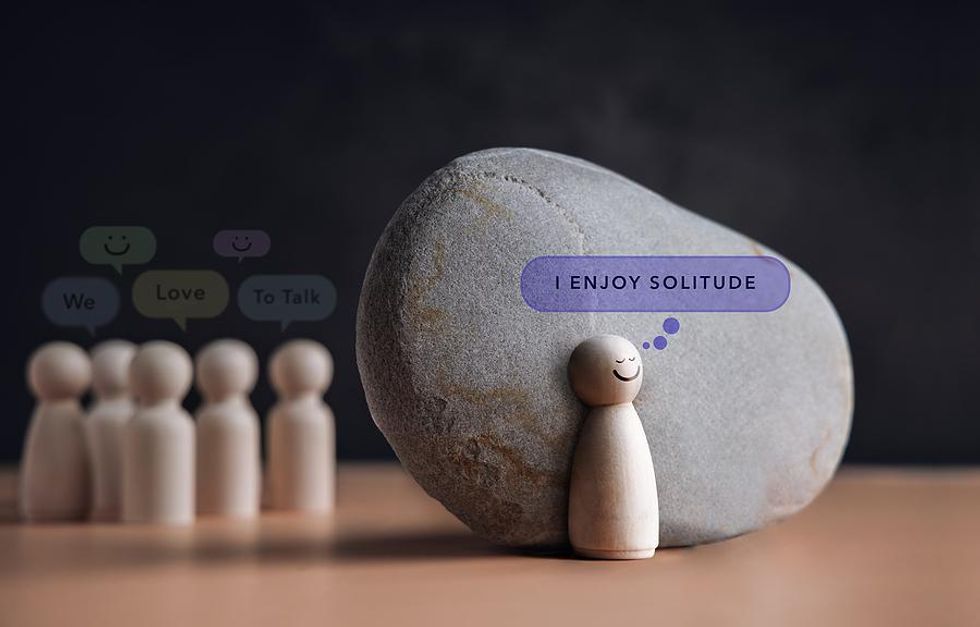
I used to work with a rapidly expanding start-up.
Rapidly expanding businesses are like bubbles. The only thing that keeps them together is a very thin skin.
As the headcount grew, so did the number of people running into problems and needing answers. They looked to their leaders to answer their questions and solve their problems. Their leaders were overwhelmed with more questions and problems than they could possibly handle.
The answer was to devolve problem-solving and decision-making lower down the chain of command. The staff needed training to think about and solve problems independently. Problem-solving is rarely taught as a skill in itself.
The 4-Step Coaching/Thinking Approach

The basic principle of coaching is helping people solve their own problems by asking questions. I revisited my coaching training and identified four basic questions that could be a simple problem-solving framework.
I trained the lowest level of team leaders to ask their staff these questions when they encountered problems so that later, team members would ask themselves the same questions and work independently and effectively. Here are the questions.
1. What are you trying to do?
This is better than 'What''s the problem?' because it focuses on the goal. When asking someone, 'What''s the problem?' you often find that you have to ask more questions to get the full picture. This tells you where they want to go. You can follow up with other questions:
- What makes this so important? The initial or 'surface' problem often hides something a lot more important. Sometimes an individual may confuse the method of achieving the goal with the goal itself.
- What will success look like? / How will you know if you have succeeded? When doing something for the first time, people do not always consider what the final result will look like. As a result, they may over-complicate their solution.
2. What''s stopping you?
This is what most people think is the 'problem.' Sometimes it helps to be like Columbo, the TV detective, and play 'dumb.' This gets the other person to explain the challenge in more detail, and as she explains it, she starts to understand it better by thinking aloud.
Here are some follow-up questions:
- What''s the situation now? You can use this where someone tells you about a series of events. It helps them concentrate on the current situation instead of 'historic' causes that are no longer relevant.
- What makes this a problem? Frustrated people don''t always think clearly. Asking this helps them to put things in perspective. They may either realize that the obstacle isn''t so massive, or they may stop, think, and understand what makes the problem such a massive obstacle. This may lead to a solution.
- What do you need? The obstacle may be lack of time, effort, or resources. When they answer, follow up with 'How will this help?' This makes them validate their answer and reduce/remove wishful thinking.
3. What are your options?
This gets us into brainstorming mode. Brainstorming comes in two stages: idea generation, where there is no such thing as a stupid idea, and idea filtration where we filter the ideas to find what is practical.
- What other options do you have? Tell me more! Assume you need at least five ideas to get one feasible idea. Inject some urgency to get ideas flowing. Activate your colleague''s unconscious creativity.
- Now rank these options in order of practicality. Ask this to sort the ideas you can use from the ones you can''t.
- Why did you reject this one? Most people think conventionally and may reject good ideas because they seem too strange. Take a look at a suitcase from the 1960s. Why did it take someone so long to put wheels on luggage?
4. What''s your plan?
Ideas are worth nothing unless they are translated into a concrete plan. Good plans have a start and end date, a concrete objective, and some sort of contingency in case things go wrong. Follow-up questions here include:
- When are you going to start?
- When are you going to finish?
- What are the deliverables?
- What could go wrong?
- How are you going to take this into account?
Ask these, and you will get your plan.
How Can You Use These Questions?

'Here are three ways to use these questions. I recommend using them in the order presented to introduce these questions as a framework for thinking.
1. Coaching-based leadership
Ask your team members these questions to lead them through the thought process. At first, you may need to tell them answers in the 'options' and 'plan' phases. Later, they will answer themselves.
2. Peer coaching
When your team gets comfortable with these questions, get them to ask each other. At first, you should make it a structured activity. Later, they will start doing it with your prompting them.
3. Self-coaching
Encourage your staff to ask themselves these questions when they hit a problem. You can put the questions on the wall as a reminder. When they come to you with a problem, ask them, 'Have you asked yourself these questions?'
If you have the budget, why not put these four questions on posters, mouse pads, coffee mugs, or T-shirts?
Does this work for you?
Are you trying to empower your team to work more independently? Try using this method! Let me know how you get on! I''d love to hear about it!











